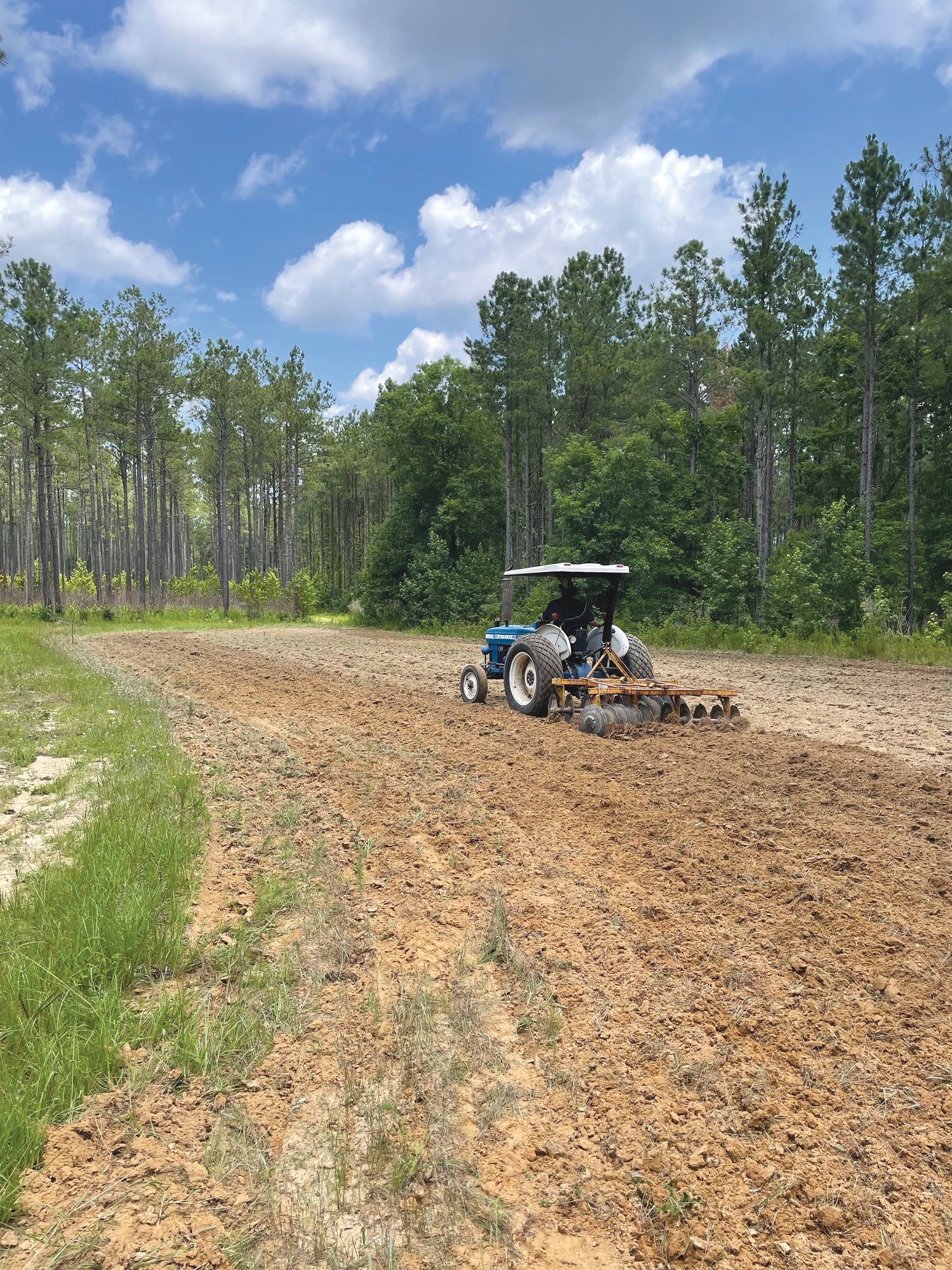Dan Geddings: Planting season
Outdoor columnist
Shannon had just unloaded the tractor when I got there, and we started on the little power line at Ed's stand. The right of way had been planted in a fall mix back during the deer season and the crop had matured and finished growing. The plot was not thick or overgrown with weeds and was easy to plow. The fresh dirt held good moisture from a recent rain and gave a pleasing earthy smell.
Shannon had to stop the tractor to remove a large pine limb that had fallen in the edge of the food plot, and I realized that I should have checked it out ahead of him. I drove to the other end of the plot and checked out that area for limbs. There were a few small ones that I picked up and threw out. Pine trees crowded in on the narrow food plot and would give some partial shade, but I didn't think the thin shade would deny us a decent stand.
A dark-colored truck rolled up at the end of the plot, and I realized it was Wes. He had offered to help. I took some five-gallon buckets out of the back of my truck and set them out on the ground. I had a 50-lb. bag of chufa seed. I opened the bag and poured an equal amount into each bucket. The seeds are hard and about the size of dried peanuts. Each bucket was a little less than half full. I explained to Wes that a bucket with more seed would be too heavy to carry comfortably.
We each took a bucket of seed and walked at a normal pace down the freshly plowed ground and broadcast the seeds by hand with a smooth sweeping motion that scattered the big seeds evenly. I explained to Wes that the chufa plants would be spaced enough to make a clump. The clump would produce a cluster of the underground nuts that are relished by wild turkeys.
After we seeded the plot, Shannon plowed back over the seeds lightly. Then we moved on to the next plot. Shannon stopped off to plow a small food plot near one of his personal stands. Wes and I waited on the road and talked. I noticed a big gobbler track in the edge of the road and pointed it out to Wes. He walked over and rubbed it out with his boot. I was a little surprised but realized that I had done that same thing hundreds of times. There's no reason to leave good sign for others to find.
When Shannon finished at his stand, we moved on up the road to another plot. It was a long, narrow food plot along the road behind some fruit trees. It didn't take long to get it plowed and seeded. Wes had no prior experience with chufa, and I explained that these plots were small but in close proximity. Turkeys would trade back and forth at these plots, that is, if they discovered them. It usually took some other critter to find the chufas, then the turkeys would notice.
Our next destination was a larger food plot at the far end of the Humpty Bumpty Road. The plot had some weeds, and Shannon went over it a couple of times to get it plowed good. Wes and I had to refill our buckets to get the whole plot covered, and we noticed it was getting hot out here in the full sun. Shannon had gone on to plow the next plot ahead of us, then came back and lightly plowed to cover the seed. On to the next one.
We had used all the seed from my bag by now. Wes had brought two bags, and we opened one of his and started on the next plot. This was the largest food plot and the last one we intended to plant in this area. We had to refill our buckets a couple of times. It wasn't getting hot anymore, it was already good and hot. Wes had to leave early, but we were about finished anyhow. Shannon plowed to cover the seed, and we were done.
The chufa patches may or may not produce a crop. Some soil types just aren't good. If we don't get a good stand, there will still be time to plow and try something else. If the chufa does good, then the turkeys will have a good winter food source, and we will be pleased with our planting season.
Reach Dan Geddings at cdgeddings@gmail.com.
More Articles to Read

